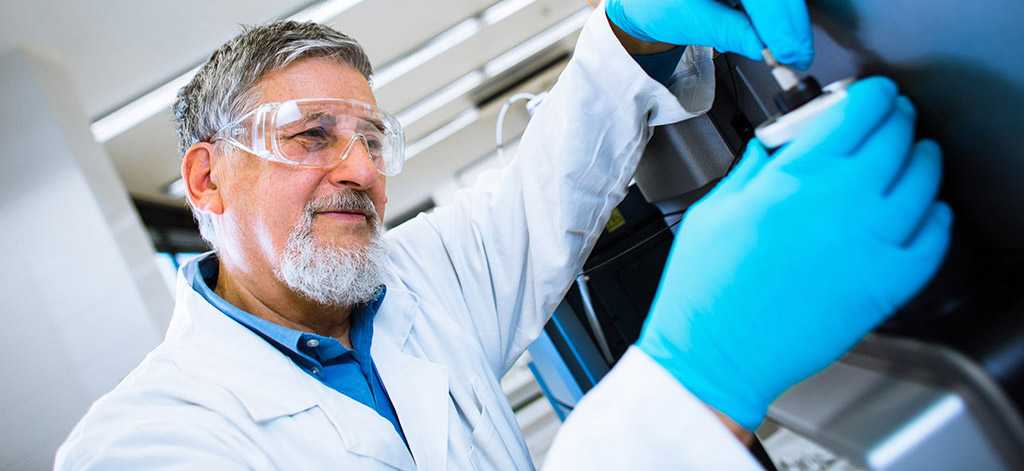Air Products’ BIP® gas cylinders offer the lowest levels of critical purity, making them the preferred choice for the most demanding research and industrial applications. In this article, we explore some of the applications of BIP® gases → and what sets them apart from other ultra-high-purity gases.
How important is purity?
How pure is “pure”? A required purity is ultimately defined by the application. For example, in cutting and welding, pure oxygen (99.5%) is commonly mixed with fuels such as propane. In the beverages industry, pure carbon dioxide (CO2)is widely used as an additive to carbonate drinks. For food and beverage applications, EU regulations allow for up to 1% total impurities in gases such as CO2.1 By contrast, manufacturers in the chemical or pharmaceutical industries may have much tighter requirements of purity for processes where impurities could have serious negative effects.
However, applications that have the highest requirements for purity are typically found within the realms of analytical chemistry (in particular gas chromatography) and semiconductor manufacturing. In these applications, even very small levels of impurities (especially the likes of oxygen (O2), water (H2O) or hydrocarbons) can result in incorrect analyses or damage the quality of products.
For these applications, Air Products offers a unique solution: BIP® gases. Our BIP® range is formulated to offer the highest levels of purity (99.9999%) and specifically minimise the levels of critical impurities; O2, H2O, and total hydrocarbons.
Applications of Ultra-high-purity Gases
Semiconductor fabrication
The semiconductor industry is a major consumer of ultra-high-purity gases for almost every step of the manufacturing process because microelectronics fabrication can be sensitive to contaminants.2 Gases like nitrogen, oxygen, helium, and hydrogen are used for cleaning procedures and some chemically reactive specialty gases are used for processes like etching.2
Improvements in semiconductor performance over the last half-century can largely be attributed to an exponential increase in the number of transistors that can be squeezed into a given volume. However, as semiconductor devices' critical dimensions have decreased, their fragility and sensitivity to contamination have increased. As a result, the purity of any gases used in semiconductor manufacturing → is critical.
Analytical chemistry
Analytical chemistry concerns itself with studying the composition of samples, instrumentation such as gas chromatography → and inductively coupled plasma mass spectrometry (ICP-MS) can do this down to a molecular level. Samples in analytical chemistry are typically minute in volume though and require another medium to carry them through the analyser, in a large number of cases a carrier gas is used for this task. In these cases, the presence of unwanted impurities in carrier/plasma gases can introduce noise and make it difficult to discern which signals come from the sample and which ones are caused by impurities in the carrier gas. When used in analytical applications, ultra-high purity gases which have been optimised to remove impurities, can reduce baseline noise, improve peak separation and, in some cases, even extend equipment lifespan.
Beyond Purity: Ultra-low critical impurities
While purity is undeniably a key parameter in assessing the quality of a gas, it’s not the only important factor. For example, a gas with a purity grade of 6.0 offers a purity of 99.9999%. However, in demanding research or semiconductor applications, the composition of that other 0.0001% can make the difference between success and failure.
Air Products not only offers ultra-high levels of purity with its BIP® range, but we can also guarantee the lowest levels of critical impurities available anywhere on the market: oxygen (≤10 ppb), moisture (≤ 20ppb) and total hydrocarbons (< 100 ppb).

Low levels of critical impurities are achieved through our unique integrated filter technology →, which removes residual oxygen, moisture, hydrocarbons, halocarbons, carbon monoxide, and carbon dioxide at the point of use. This not only ensures the lowest possible levels of impurities, but eliminates the need for external purification equipment, enabling many of our customers to realise substantial savings by switching to BIP® cylinders →.
To find out more about our BIP® range of gases, visit our dedicated website: www.airproducts.expert/uk/BIP Or get in touch with a member of the Air Products team today: apukinfo@airproducts.com, 0800 389 0202.
References and Further Reading
-
Commission Regulation (EU) No 231/2012. http://data.europa.eu/eli/reg/2012/231/oj/eng (2012).
-
Funke, H. H., Grissom, B. L., McGrew, C. E., & Raynor, M. W. (2003). Techniques for the measurement of trace moisture in high-purity electronic specialty gases. Review of Scientific Instruments, 74(9), 3909–3933. https://doi.org/10.1063/1.1597939
-
Patel, K., Patel, J., Patel, M., Rajput, G. & Patel, H. Introduction to hyphenated techniques and their applications in pharmacy. Pharm Methods 1, 2 (2010).
